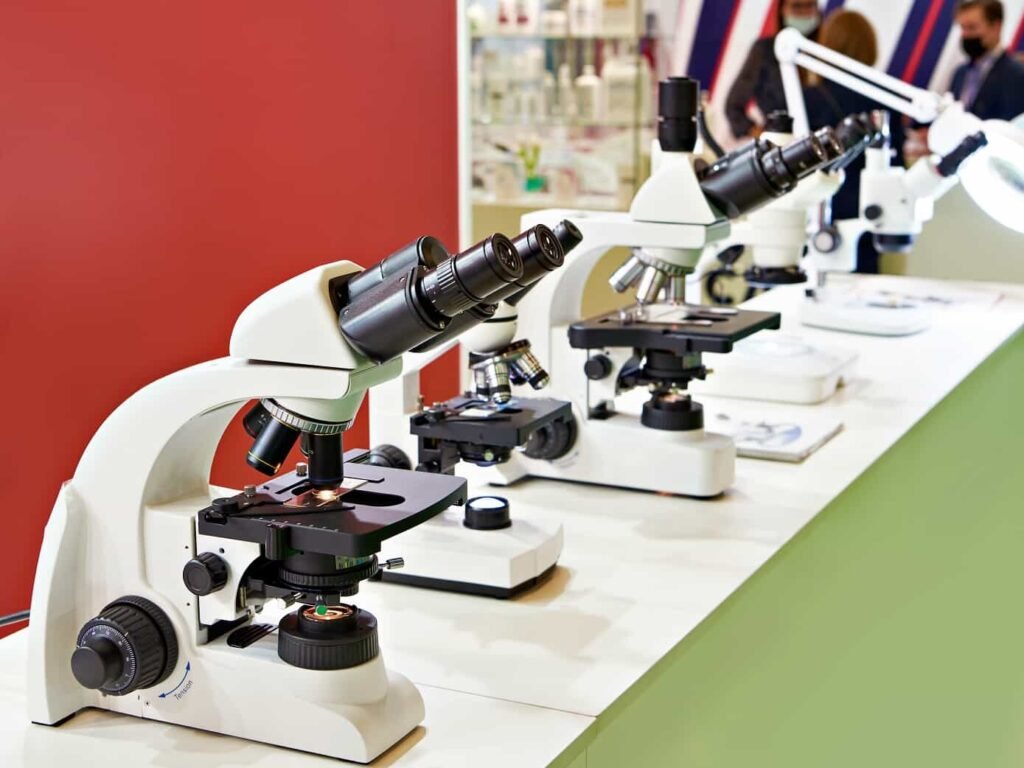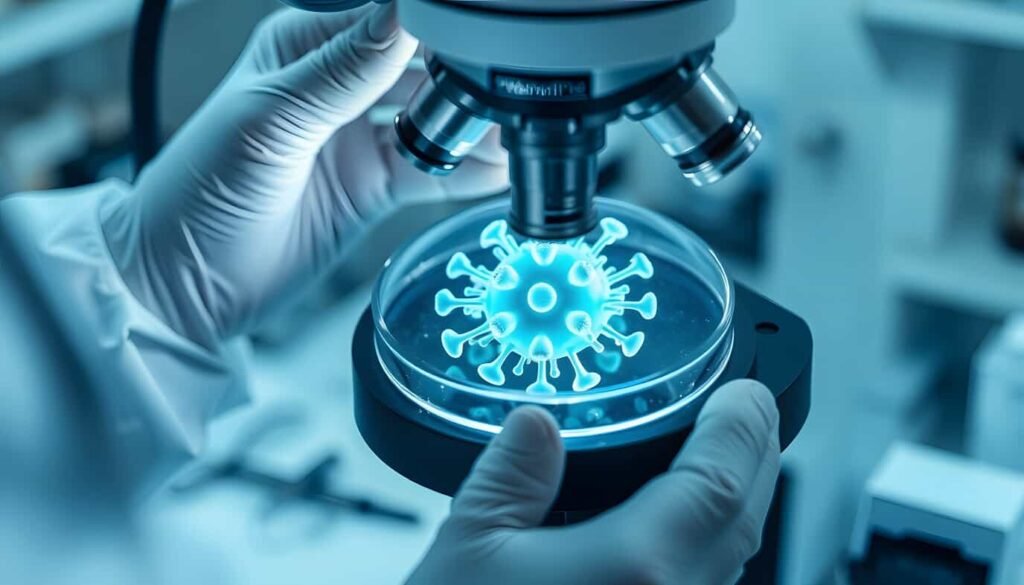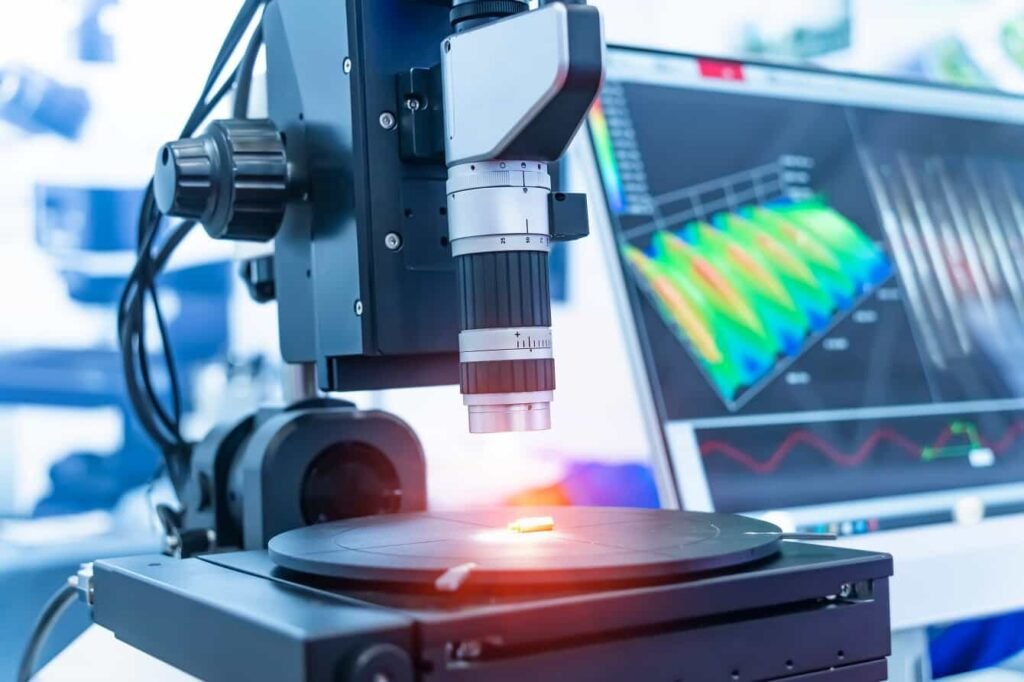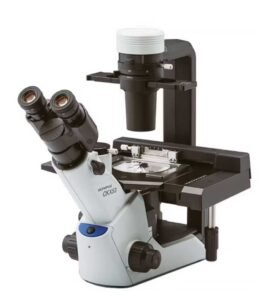Stereo microscopes are designed to observe specimens through their high-magnification lenses. They implement a straightforward optical-mechanical mechanism featuring a head with two examination tubes, two objectives, a system of lenses, and an inner prism.
The view is 3D, giving a visual of depth perception! Unlike compound microscopes, stereo microscopes use less power and support magnification levels between 5 and 80X.
Also known as dissecting microscopes, stereo microscopes aim to provide an upright, 3D perspective. They are named so because the observer can easily manipulate the object under view with a significant degree of precision. A movable arm allows the observer to observe the different parts of the object under study.
These microscopes are versatile for home Laboratories and Clinics where kids can thoroughly explore supported subjects. So, if you want to buy one such model for your science-savvy kids or your critical research, this guide will help you do so smoothly.
What Are Stereo Microscopes Used for?
These microscopes are designed to give a 3D view of solid objects with complex surfaces using reflective or incidental lighting, in contrast to the transmitted lighting used by a biological microscope.
These devices are ideal for inspecting thick or opaque surfaces via which light usually does not pass. They offer different angles to display a multi-dimensional view and assess minute details.
The primary use of such a microscope is to view large, solid planes or specimens. A stereoscopic microscope is required for entomological surveys to fulfill a research goal or to discover farfetched, concealed shapes.
Such devices are specifically made for viewing whole objects such as floras, pests, and rocks. They are also helpful for exploring the prepared slides and nature studies. Even young kids can use them for their studies or comprehension.
These microscopes are widely used for studying solid surfaces. They are commonly found in tasks related to forensic engineering, microsurgery, watch-designing, dissection, entomology, circuits, and fractography. They are widely used in quality control and manufacturing fields.
Many models have a top illuminator that channels light downward on the subject. However, higher-end models have a bottom illuminator that allows users to view the subject via the transmitted light.
Low-power or stereo microscopes typically have both these lights (reflected and transmitted). They are ideal for examining transparent and opaque materials, including sand, soil, stamps, fabric weaves, insects, coins, and minute electrical parts.
Although not mandatory, a stereo model is helpful for Laboratories and Clinics at home. Go for it if you have the budget, but do not withhold a compound microscope. It is ideal to purchase a compound model only instead of a cheap stereo or compound model. A magnifier or compound microscope at the lowest magnification is a wise substitute if no stereo microscope exists.
The most widely used magnification levels are 20, 30, and 40x. As a thumb rule, more magnification is only sometimes preferable. This is because, at a high level, you observe fewer object details. For instance, a coin collector will prefer a 10x model, while a sand collector will need a 40x one.
There are usually three types of stereo microscopes: zoom models with a continuous range of around 10 to 40x, with two independent powers (10/30x, 15/45x), and single-power (20x or 30x). The zoom models offer maximum magnification options, although they are costlier than the single-power ones.

How to Choose a Stereo Microscope?
Now that you know what stereo microscopes are used for, it is time to choose the best model. This section will make this simple for you by sharing comprehensive details.
Selecting a stereo microscope is a thoughtful job that requires enough time, proper comparison, and an in-depth assessment of your needs. After all, it is a critical need that will escort you through several years of research.
To get started, remember that only some brands or models are ideal for all. This is true, although there are dedicated brands. Choosing a model and brand that fits your budget and requirements would be best.
An individual wishing to buy a home lab will have requirements and budgets different from those of a professional in a science lab. While great options are available, you must assess them carefully.
If you are strictly on a budget, you can consider used models or clones of popular models. The benefit you relish here is the easily available accessories such as lenses and eyepieces, all of which work well even in clones.

To buy the best stereo model, you need to find answers to the following questions first:
- What is the purpose or use?
- Which objects do you need to study or visualize?
- What is the budget you can keep?
- How many people will be using the stereo microscope?
Once you know these answers, you need to map them with the following buying factors or criteria:
Magnification
The proper magnification range depends on what you wish to observe. Stereo models are unreliable for keeping bacteria and cells, requiring more than 900x magnification.
All stereo models come with a magnification changer featuring optical lenses. These lenses allow you to change the equipment’s magnification. Altering the changer’s position modifies the degree to which you can magnify the specimen, which is known as the magnification factor.
The modern models can offer up to 16x magnification (only zoom) and a zoom range of 20.5:1. They also have encoding capabilities to ensure reliable dimensions.
If you wish to get as much value as possible for the cost, consider the best budget model that provides wide magnification limits. This will allow the device to be used for diverse specimens and in most circumstances.
Standard eyepieces are associated with 10x magnification, although you can replace them with higher magnification eyepieces without changing the working distance. To compute magnification, multiply the eyepiece’s and objective’s magnification.
Auxiliary lenses allow you to change the objective’s magnification and working distance. For instance, a 10x eyepiece, a 2x auxiliary lens, and a 1X objective give 20x magnification.

Object Field
This is visible as a spherical field while peeping into the eyepieces from a reasonable distance and with the precisely configured interpupillary distance. Its diameter is reliant on magnification. For example, 10x magnification power facilitates an object field with a diameter of 23. At 3x, the diameter of the object field narrows to 1/3rd part.
Depth of Field (DOF)
In microscopy, this factor is an experimental parameter. However, the correlation between magnification, resolution, and numerical aperture governs DOF. Modern microscopes can adjust to balance the inversely proportional factors, namely, DOF and resolution, to get the best visual impact.
You can raise the DOF at low magnifications by decreasing the numerical aperture (stopping downwards). Nevertheless, a smaller numerical aperture indicates a lower side resolution. In short, you must strike an optimum balance of DOP and resolution according to the object’s structure. It is essential to significantly compromise in favor of a higher DOF, as the z-dimension often uses it.
Working Distance
Most stereo models provide some space for object steering. You must ask yourself whether you will be welding a printed circuit board or observing a fixed biotic specimen. You must match your purpose with the field of view and working distance.
The working distance is between the focused object’s top surface and the objective front lens. It usually decreases as the magnification increases. This factor is essential in stereo microscopy, directly affecting the device’s usability.
In short, this distance should allow you to work with fingers beneath the objective. Many classic models, including their clones, come with a 100mm working distance, which is ideal. The application says you can raise or lower the distance using additional lenses.
Quality of Construction
A durable model uses glass optics and only metal frames. The plastic parts tend to last for a short time. If you need more money, please review the reviews before investing in your preferred equipment. If there is a plastic frame, it is essential to defend it and prevent its exposure to sunlight.
Illumination
This is the key to exposing all work using a stereo microscope to light. If the illumination is correct, your visualization will cover all the specimen parts or give new details only by modifying the light type. Could you match the illumination precisely to the proper application?
Modern options have different lighting options, so moving the tool from one area to another is unnecessary. For many, fluorescent and tungsten illuminations are better than halogen and LED systems. However, the latter two are also durable and reliable. Of the two, the halogen ones are costlier.
Following are the illumination systems available for stereo microscopy:
- Incident: For non-transparent objects such as spots, ring lights, and so on, as per the objects’ texture and usage requirements
- Transmitted: For diverse transparent specimens, including biological to polymer specimens
- Standard Transmitted Brightfield: For transparent specimens with adequate color details and high contrast
Oblique Transmitted: For transparent specimens that are almost colorless - Darkfield: For channelizing an inverted hollow cone at slanting angles towards the specimen using a specialized stand having a reflection mirror
Optical Quality
This factor delivers high definition and clarity from the middle of the specimen to the Field of View (FOV) edges. The FOV and eyepieces with a WF label must be as comprehensive as possible. Optical quality in stereo microscopes pertains to how accurately a sample can be imaged. This involves a combination of factors, including resolution, which determines how much detail can be seen, and depth of field, which affects the amount of the sample that remains focused at one time.
Technologies like Leica Microsystems’ FusionOptics are designed to simultaneously provide high resolution and a considerable depth of field. This is accomplished by having one beam path that offers higher resolution and another that provides a greater depth of field, allowing for detailed and extensive viewing of samples1.

Best Stereo Microscopes Reviewed – Expert Guide for 2024
The world of microscopy is intricate and varied, with stereo microscopes playing a crucial role in educational, clinical, and industrial settings. As we embrace 2024, we must understand the advancements in stereo microscopy that can enhance observational precision. This expert guide reviews the top stereo microscopes, comparing features, optical quality, and functionality.
1. Zeiss Stemi 508 ($2,099.00)

The Zeiss Stemi 508 stereo microscope stands out for its excellent optical performance and robust mechanics, tailored to meet the demands of both laboratory and industrial inspection tasks.
Features:
- Optical Excellence: Equipped with apochromatic optics, the Stemi 508 delivers high-contrast, color-accurate images, and its 8:1 zoom brings minute details into sharp focus. The optics ensure a three-dimensional, distortion-free image without color fringes, providing a field of view up to 122 mm and magnification options between 2× and 250×1.
- Historical Precision: Zeiss’s legacy in apochromatic lenses dates back to 1886, ensuring that the Stemi 508’s apochromatic objectives produce sharper and more brilliant images.1.
- Mechanical Durability: Designed for heavy workloads, the Stemi 508 boasts durable and reliable mechanics.1.
- Versatility for Various Applications: The microscope has different stands and lighting options for various applications.1.
In conclusion, the Zeiss Stemi 508 is a superior choice for professionals seeking reliability, versatility, and outstanding optical quality in stereo microscopy work.
2. Olympus CKX53 ($3,250.00)

The Olympus CKX53 Inverted Microscope stands at the forefront of Laboratories and Clinics’ research innovation. Designed specifically for cell culture observation, this advanced microscope is a must-have for modern labs focusing on cell biology, biomedical research, and clinical diagnostics. With its state-of-the-art features and user-friendly design, the CKX53 is not just a tool but a pivotal asset in scientific discovery.
Why Choose the Olympus CKX53?
Choosing the Olympus CKX53 means opting for precision, efficiency, and reliability. Its combination of superior imaging, user-centric design, and versatile capabilities make it an invaluable asset in any laboratory setting. Enhancing the accuracy and ease of cell culture observation is critical in advancing scientific research and improving diagnostic procedures.
Conclusion: A Vital Tool for Cutting-Edge Research
The Olympus CKX53 Inverted Microscope is more than just equipment; it’s a gateway to discoveries and a beacon of innovation in laboratory research. Embrace the future of cell culture observation with the CKX53 and take your research to the next level.
3. Zeiss Discovery V.12 ($7,450.00)

4. Olympus SZX16 ($5,670.00)

The Olympus SZX16 is a research-grade stereo microscope designed to meet the rigorous demands of life science imaging. It is lauded for its darkfield and polarization capabilities, alongside a large 16.4:1 zoom ratio, making it adept at imaging entire organisms down to intricate cellular structures1.
Optically, the SZX16 is a powerhouse with fully apochromatic optics, including observation tubes, a zoom body, and objectives, ensuring reduced chromatic blur across the magnification spectrum. The Super Depth of Focus (SDF) objectives deliver clear, high-contrast images with a maximum numerical aperture (NA) of 0.3, achieving a resolution of 900 line pairs per millimeter. This allows for the visualization of delicate microscopic structures with excellent clarity2.
In fluorescence observation, the SZX16 excels with engineered optics that enhance light transmission, improving image clarity and signal intensity for fluorescence. It allows bright fluorescence observation across all magnifications and includes a 5-position filter wheel to control excitation light2.
In summary, the Olympus SZX16 excels in optical performance, ergonomic design, and practical functionality, marking it a top-tier instrument for advanced research in life sciences.
In Conclusion
Stereo microscopes are invaluable tools in various fields. The models reviewed in our 2024 guide exemplify the best in optical performance, ergonomic design, and digital capabilities, ensuring that professionals and students can access the best tools for their needs.
Stereo microscopes have specific uses due to their improved components, aperture, DOF, magnification range, zoom range, and field view. While shopping for the most suitable one, consider your budget a priority. If lacking, consider buying a reliable, used model from a trustworthy seller, such as Ferus Medical.

One Reply to “How to Choose a Stereo Microscopes for Your Laboratories and Clinics”
The Evolution and Impact of ZEISS Microscopes in Modern Sciences
[…] Start by understanding the types of microscopes offered by ZEISS. Their systems range from simple compound microscopes to advanced stereo microscopes. […]